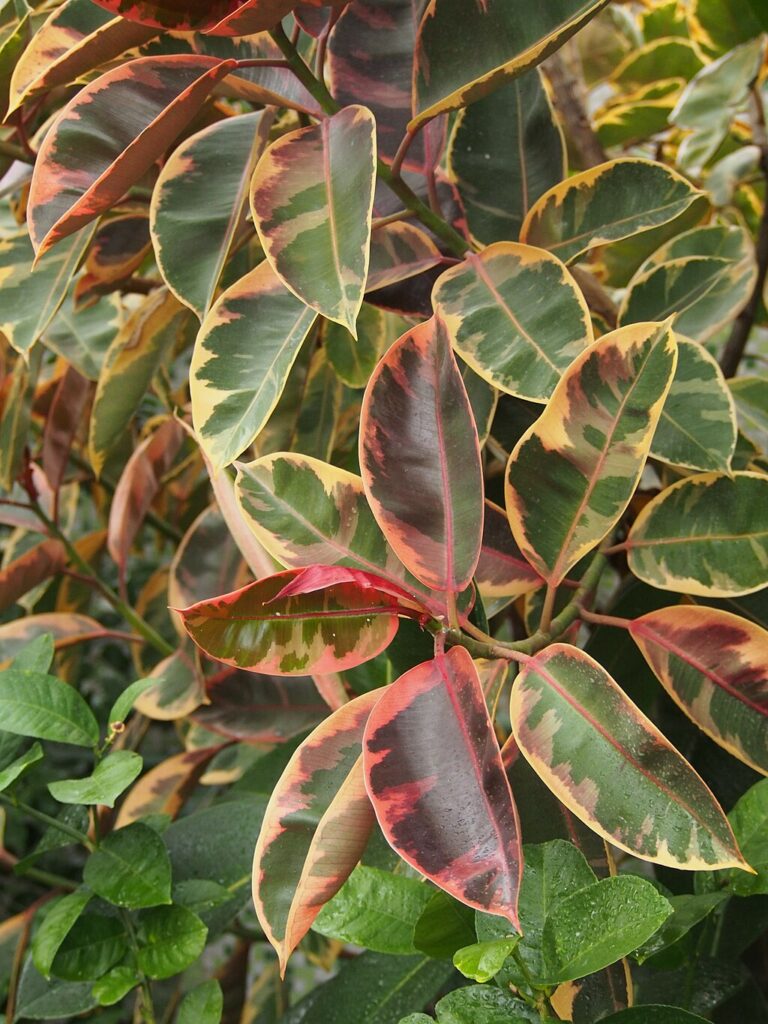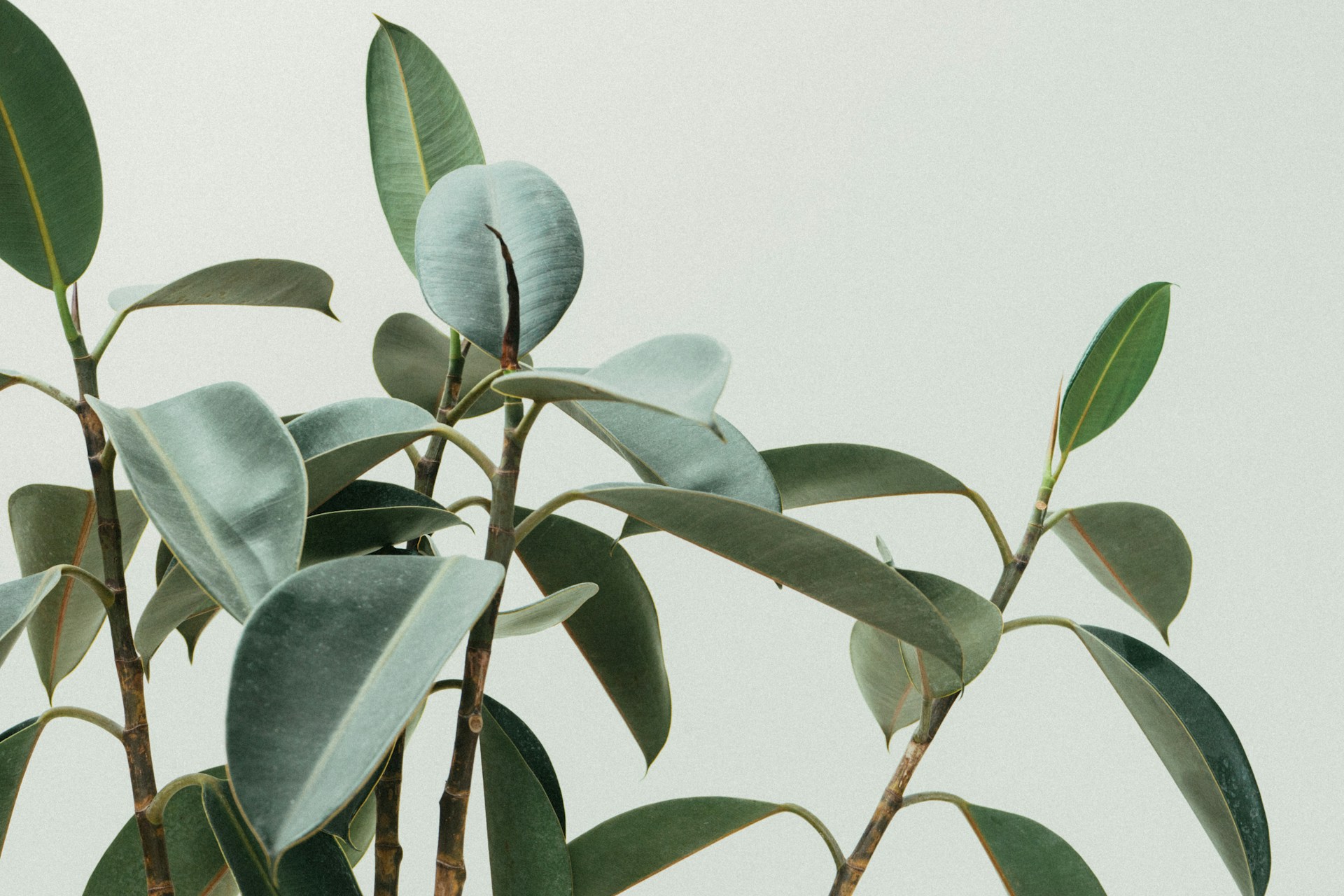Everything To Know About Rubber Plant! The Ultimate Guide
- What is a Rubber plant?
- Rubber Plant Benefits
- What makes Rubber Plant Special?
- Where to place your Rubber Plant?
- History and Cultural significance
- Rubber plant specifications
- Rubber plant Types and Varieties
- Rubber plant Care and Maintenance
- Rubber plant Propagation
- Problems in Rubber Plants
- Common Misconceptions about Rubber Plants
- Final Thought and Personal View
Did you know the rubber plant begins its existence as an epiphyte? This implies that it grows on other trees in its natural rainforest habitat, using them for support in its early stages.
What is a Rubber plant?
The rubber from Ficus elastica is not as robust as real rubber from Hevea brasiliensis trees, however, it serves a variety of industrial purposes.
Rubber Plant Benefits
◼Low-Light Tolerant
- The rubber plant, unlike many houseplants that require high light, can endure lower light levels.
- This makes it an appropriate choice for places that do not receive a lot of natural sunshine.
◼Air Quality Champion
- The rubber plant, like many other houseplants, purifies the air naturally.
- According to studies, it may eliminate common contaminants such as formaldehyde and benzene from interior spaces, resulting in a cleaner atmosphere.
What makes Rubber Plant Special?
◼Musical Inspiration
◼Giants in the Wild
◼Fiddle Fig Confusion
Where to place your Rubber Plant?
◼For Wealth and Prosperity
◼For Growth and New Ventures
◼Strengthens the relationship
Rubber plants boost oxygen in the bedroom which improves sleep quality and which strengthens relationships.
◼Boosts health
Rubber plants placed indoors purify the air inside. It enhances your mood eventually your health in the short and long term.
History and Cultural significance
While the rubber plant (Ficus elastica) is not the original source of natural rubber, its decorative properties and tolerance to indoor circumstances have made it a popular houseplant choice.
No one knows exactly when and how rubber plant got popula but it is believed to have grown simultaneously with the extensive usage of rubber in the late nineteenth and early twentieth centuries.
The rubber plant is still a popular houseplant, valued for its air-purifying characteristics, simplicity of maintenance, and symbolic resonance in various cultures.
Rubber plant specifications
| Botanical Name | 🌱 Ficus elastica 🌱 |
|---|---|
| Color |
|
| Size |
|
| Origin | Southeast Asia, specifically the Philippines, Indonesia, and portions of New Guinea🌴. |
| Flowering |
|
| Pattern | 🌿 Dark green leaves of classic rubber varities 🍃 Many kinds have splashes, stripes, or patterns of white, pink, cream, red, or silver on their green leaves. |
| Planting Season |
|
Rubber plant Types and Varieties
◼Ficus elastica 'Robusta'

◼Ficus Burgundy

◼Ficus elastica 'Tineke'

◼Ficus elastica 'Doescheri'

◼Ficus elastica 'Tricolor'

Rubber plant Care and Maintenance
◼Lighting and Placement
For Spring and Summer:
Put your rubber plant in bright, indirect sunlight. Avoid direct sunlight, which can burn the leaves. East and west-facing windows are great.
For Fall and Winter:
Maintain the same lighting conditions during the fall and winter. If natural light is limited, consider supplementing with artificial grow lights to ensure adequate brightness.
◼Watering
For Spring and Summer:
Water thoroughly when the top inch of soil is dry to the touch. To avoid waterlogging, make sure that there is sufficient drainage.
For Fall and Winter:
Allow the soil to dry somewhat in between waterings. Reduce watering frequency during colder and dormant seasons to prevent root rot.
◼Temperature
- Rubber plants enjoy daytime temperatures ranging from 65 to 85°F (18-29°C) and somewhat colder nighttime temperatures.
- Also, it is best to avoid drafts and unexpected temperature fluctuations.
◼Humidity
- Maintain moderate to high humidity levels around your rubber plant, particularly during the dry months.
- Mist the leaves often, use a humidifier, or set the plant on a tray filled with stones and water to improve humidity.
◼Fertilizer
- Feed your rubber plant with a balanced liquid fertilizer diluted to half strength every 4-6 weeks during the growing season (spring and summer).
- Reduce or stop 🔴 fertilizing during fall and winter when the plant is dormant.
◼Repotting
- Rubber plants grow slowly and do not require frequent repotting.
- It is only needed when the roots outgrow the present pot, which occurs every 2-3 years, if not earlier.
- Watchout for roots surrounding the pot or pushing up the soil and that’s when you repot your rubber plant
◼Soil
- Rubber plants demand a well-drained potting soil that enables excess moisture to leave easily.
- A good-quality commercial potting mix designed for houseplants is a smart place to start.
- And to improve drainage, add perlite, orchid bark, and coco coir to this mix.
◼Cleaning
- Rubber plant leaves are quite large and smooth, which makes them simple to clean.
- To eliminate dust and keep them shiny, wipe them down on a regular basis with a moist cloth.
- Avoid using strong chemicals or leaf-shine treatments.
◼Pruning
- Pruning is not necessary for the health of your rubber plant, but it can help keep it in its ideal form and size.
- You may clip leggy stems and remove damaged leaves at any time of the year.
Rubber plant Propagation
◼Air Layering
The air layering propagation technique encourages the rubber plant to generate new branches.
This propagation strategy includes promoting root growth on a stem that is still linked to the parent plant, resulting in a fuller plant.
Problems in Rubber Plants
◼Yellowing leaves:
- The yellowing of rubber plant leaves could be due to many different factors.
- It includes overwatering, underwatering, inadequate light, and nutritional inadequacies.
- Evaluate the underlying issue to take appropriate action.
- Also, trim away any yellowed or damaged leaves to promote new development.
◼Wilting or Drooping Leaves or Brown Leaf Tips:
- Underwatering can cause rubber plants to wilt, droop their leaves, and develop brown leaf tips.
- Water your rubber plant thoroughly after the top inch or two of the soil feels dry to the touch.
- Ensure proper drainage in the pot to prevent waterlogging.
◼Root Rot:
- Overwatering is a usual problem with rubber plants since it can cause root rot and yellowing leaves.
- And to avoid root rot, don’t let the plant sit in water, and throw the excess water accumulated in the tray below the pot.
- Also, make sure to let the soil dry out a little between waterings.
- Adjust your watering schedule based on the plant’s requirements and the moisture level in the soil.
◼Leaf Drop
Rubber plants may occasionally shed their leaves in reaction to stress, such as changes in light, temperature, or watering schedule.
Ensure that the plant receives constant care and avoids unexpected environmental changes.
New growth should eventually replace the missing leaves.
Common Misconceptions about Rubber Plants
One frequent misconceptions is that rubber plants are demanding houseplants, yet they are really noted for their durability and low maintenance requirements. With adequate hydration, light, and periodic cleaning, they may survive inside for many years.
Another rumor going around is that rubber plants rubber plants have large, showy flowers. Rubber plants aren’t known for having blooms. They occasionally produce little, inconspicuous inflorescences, which are frequently obscured by foliage.
Final Thought and Personal View
The rubber plant is more than just a decorative houseplant. It has a fascinating history, unique ecological relationships, and air-purifying properties, making it a valuable addition to your home or office.
There are many reasons to choose rubber plants, and if you are interested in other plants with similar specifications, you should check the list of low-maintenance indoor plants for your home.
Green love to you. Keep smiling. Ciao.






